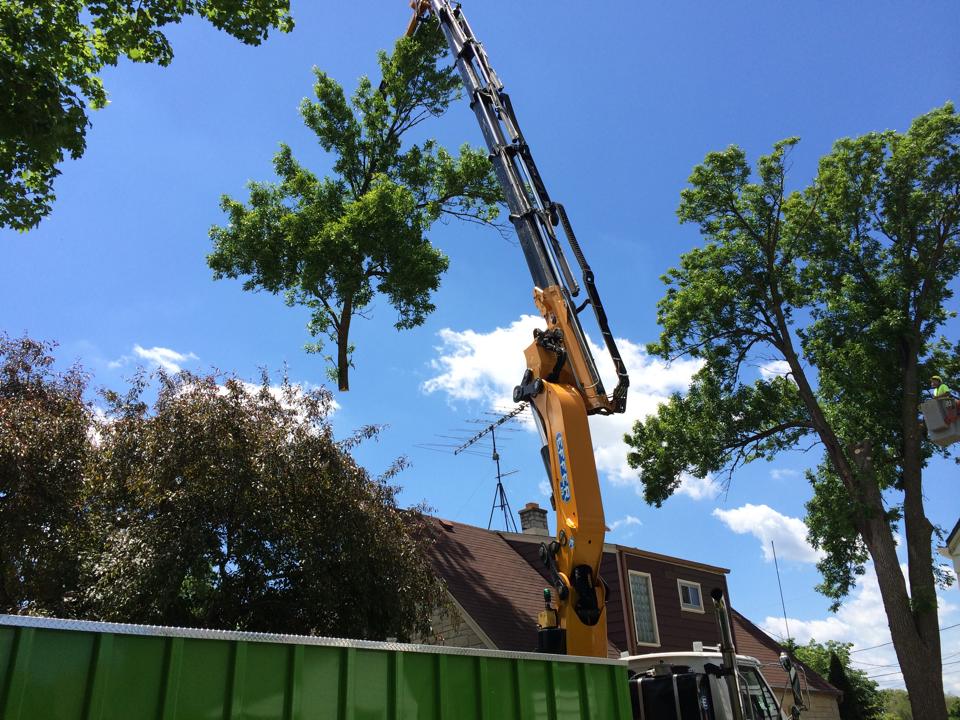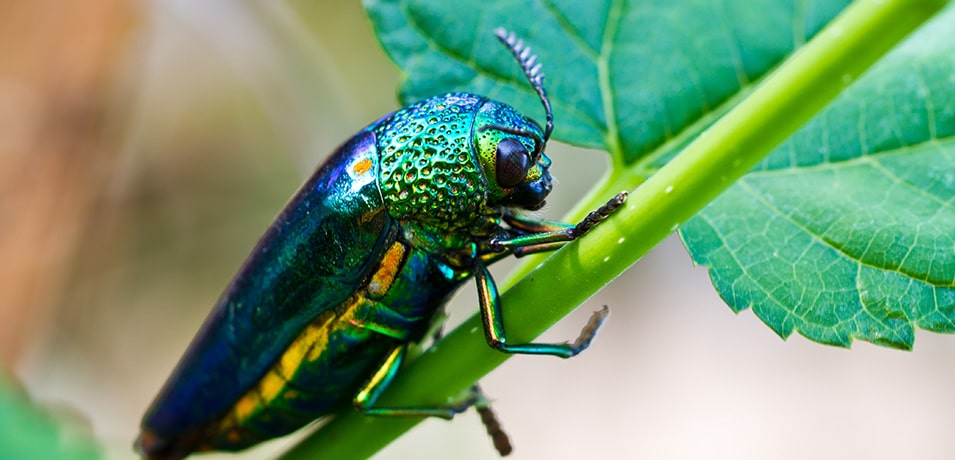As experts in the field, we specialize in comprehensive treatment for tree damage incurred by invasive species in Wisconsin like the Emerald Ash Borer Beetles, Box Elder Bugs, Gypsy Moths, Silver Maple Beetles and other problematic insects. Russ’s Tree Service also treats harmful tree diseases like Oak Wilt, Dothistroma Needle Blight and leaf blight, spotting and blotching.
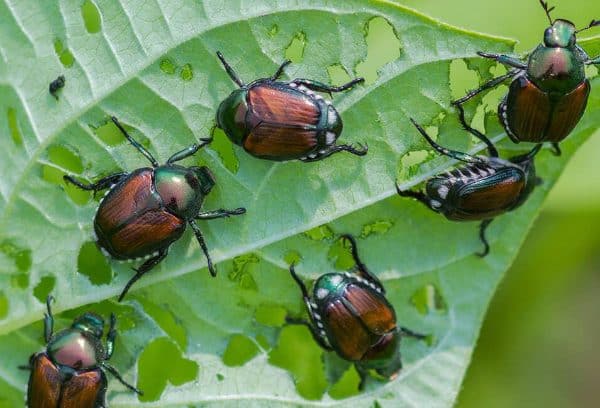
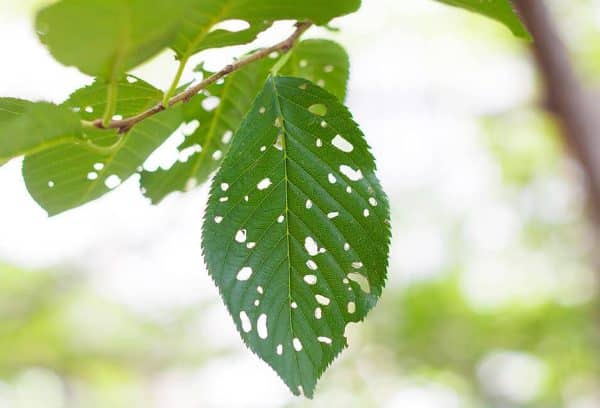
Box elder bugs are a common pest in Wisconsin that can infest trees and cause damage to their leaves and branches. These bugs are often found in large groups on trees during the fall and winter months.
How to identify an infested tree…
One of the first signs of an infested tree is the appearance of wilted leaves. Box elder bugs feed on the leaves of trees, causing them to wilt and turn yellow. The leaves may also have small, circular holes in them.
Another way to identify an infested tree is to look for large groups of bugs on or around the tree. Box elder bugs are black with red or orange markings and are easy to spot on trees and other surfaces.
How to prevent the spread of the Box Elder Bugs
Preventing the spread of box elder bugs in Wisconsin is crucial to protect the state’s trees. One way you can help prevent the spread of the bugs is to seal all cracks and crevices in your home’s exterior to prevent them from entering.
Do you think you have an infestation?
If you suspect that a tree on your property is infested with Box Elder Bugs, It is important to contact an ASI Certified Arborist to get a diagnosis. It is imperative that treatment starts quickly. Box elder bugs are a common pest in Wisconsin and they can have devastating effects on your trees if left untreated.
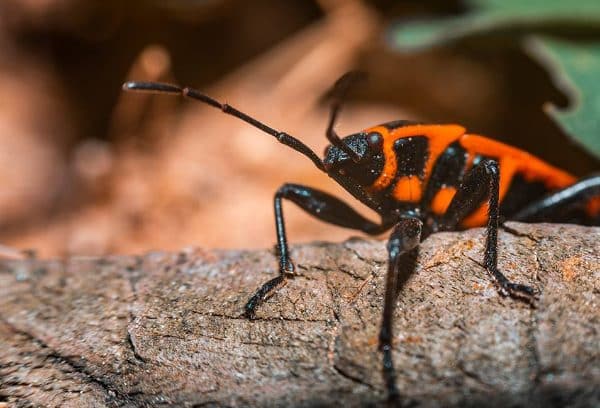
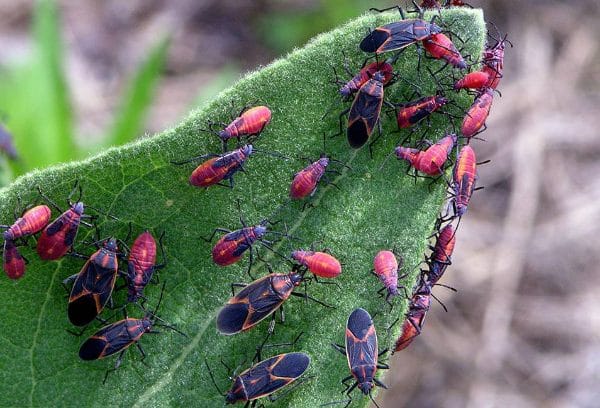
The gypsy moth is an invasive species of moth that also poses a significant threat to trees in Wisconsin. The moth was first introduced to the United States in the late 1800s and has since spread to many states, including Wisconsin.
How to identify an infested tree…
One of the first signs of an infested tree is the appearance of defoliation. The gypsy moth feeds on the leaves of trees, and an infested tree may lose its leaves entirely. The defoliation typically begins at the top of the tree and works its way down, with some leaves remaining on the lower branches.
Another way to identify an infested tree is to look for gypsy moth egg masses. The egg masses are light brown and can be found on the bark of trees or other objects near the infested tree. Each egg mass contains hundreds of eggs, which will hatch in the spring and begin feeding on the tree’s leaves.
How to prevent the spread of the Gypsy Moth
Preventing the spread of the gypsy moth in Wisconsin is crucial to protect the state’s trees. One way to prevent the spread of the moth is to avoid moving firewood, which can harbor gypsy moth larvae. Firewood should be obtained locally and burned within the same county to prevent the spread of infestations.
Do you think you have an infestation?
If you suspect that a tree on your property is infested with the Gypsy Moth, you should contact a professional immediately. Our Certified Arborists at Russ’s Tree Service can quickly assess your situation, recommend, and implement action to save your trees.
The Japanese beetle is an invasive species that poses a significant threat to trees in Wisconsin. The beetle was first detected in the state in the early 1990s and has since spread to many counties, causing significant damage to trees and plants.
How to identify an infested tree…
One of the first signs of an infested tree is the appearance of skeletonized leaves. The Japanese beetle feeds on the foliage of trees, leaving behind only the veins of the leaves. The leaves will appear brown or tan in color and may have a lace-like appearance.
Another way to identify an infested tree is to look for large numbers of beetles on or around the tree. The Japanese beetle is a metallic green color with copper-colored wings and is easy to spot on trees and plants.
How to prevent the spread of the Japanese beetle…
Preventing the spread of the Japanese beetle in Wisconsin is crucial to protect the state’s trees and plants. One way to prevent the spread of the beetle is to avoid transporting soil, plants, and lawn clippings from areas known to be infested with the beetle.
Do you think you have an infestation?
If you suspect that a tree on your property is infested with the Japanese beetle, it is essential to take action immediately. It is important to contact a professional to ensure that diagnosis & treatment starts immediately. Contact Russ’s Tree Service for assistance. Our ASI Certified Arborists have the knowledge and experience to handle any of your infested trees quickly.
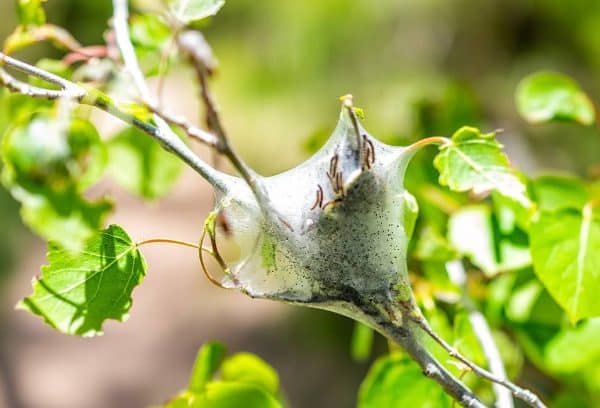
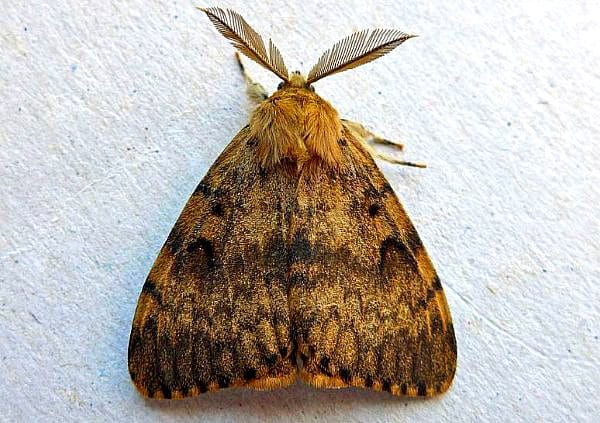
The Emerald ash borer (EAB) is an invasive species of beetle that has become a significant threat to ash trees in Wisconsin. The beetle was first discovered in the state in 2008 and has since spread to many counties, causing significant damage to ash trees and the ecosystems they support.
How To Identify an Emerald Ash Borer Infestation
You should start by taking a close look. One of the first signs of an infested ash tree is the appearance of woodpecker damage on the bark. Woodpeckers are known to feed on the larvae of the EAB and will peck at the bark to access them. The bark of an infested tree may also appear cracked or split, with winding tunnels visible underneath. Adult EAB beetles will also leave D-shaped exit holes in the bark as they emerge from the tree.
Another way to identify an infested ash tree is to look for signs of canopy dieback. An infested tree will typically lose leaves from the top of the canopy down, and branches may appear sparsely foliated or dead. If a tree has lost more than one-third of its canopy, it may be infested with Emerald Ash Borer beetles.
How to Prevent The Spread of EAB’s
Preventing the spread of the EAB in Wisconsin is crucial to protect the state’s ash tree population. One way to prevent the spread of the beetle is to avoid moving firewood, which can harbor EAB larvae. Even though Wisconsin is under a statewide EAB quarantine, firewood should be obtained locally and burned within the same county to prevent the increased spread of infestations.
Do You Believe You Have an Emerald Ash Borer Infestation?
If you suspect that an ash tree on your property is infested with Emerald Ash Borer beetles, it is essential you contact Russ’s Tree Service for an inspection by one of our ASI Certified Arborists. Our team can quickly identify the issue, recommend a course of action, and begin effective treatment quickly. We will also notify the officials at the Wisconsin Department of Natural Resources (DNR) so they can take any necessary steps to prevent the EAB’s spread in your area.
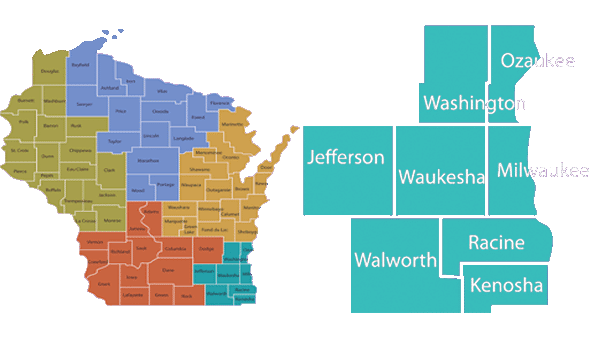
All or parts of:
Racine County, Kenosha County, Walworth County, Jefferson County, Washington County, & Ozaukee County.
Big Bend, Brookfield, Butler, Delafield, Dousman, Eagle, Elm Grove, Genesee Depot, Hartland, Lac La Belle, Lannon, Menomonee Falls, Merton, Mukwonago, Muskego, Nashotah, New Berlin, North Lake, North Prairie, Oconomowoc, Oconomowoc Lake, Okauchee, Okauchee Lake, Pewaukee, Summit, Sussex, Vernon, Wales, Waterville, Waukesha
Bayside, Brown Deer, Cudahy, Fox Point, Franklin, Glendale, Greendale, Greenfield, Hales Corners, Milwaukee, Oak Creek, River Hills, St Francis, Shorewood, South Milwaukee, Wauwatosa, West Allis, West Milwaukee, Whitefish Bay
